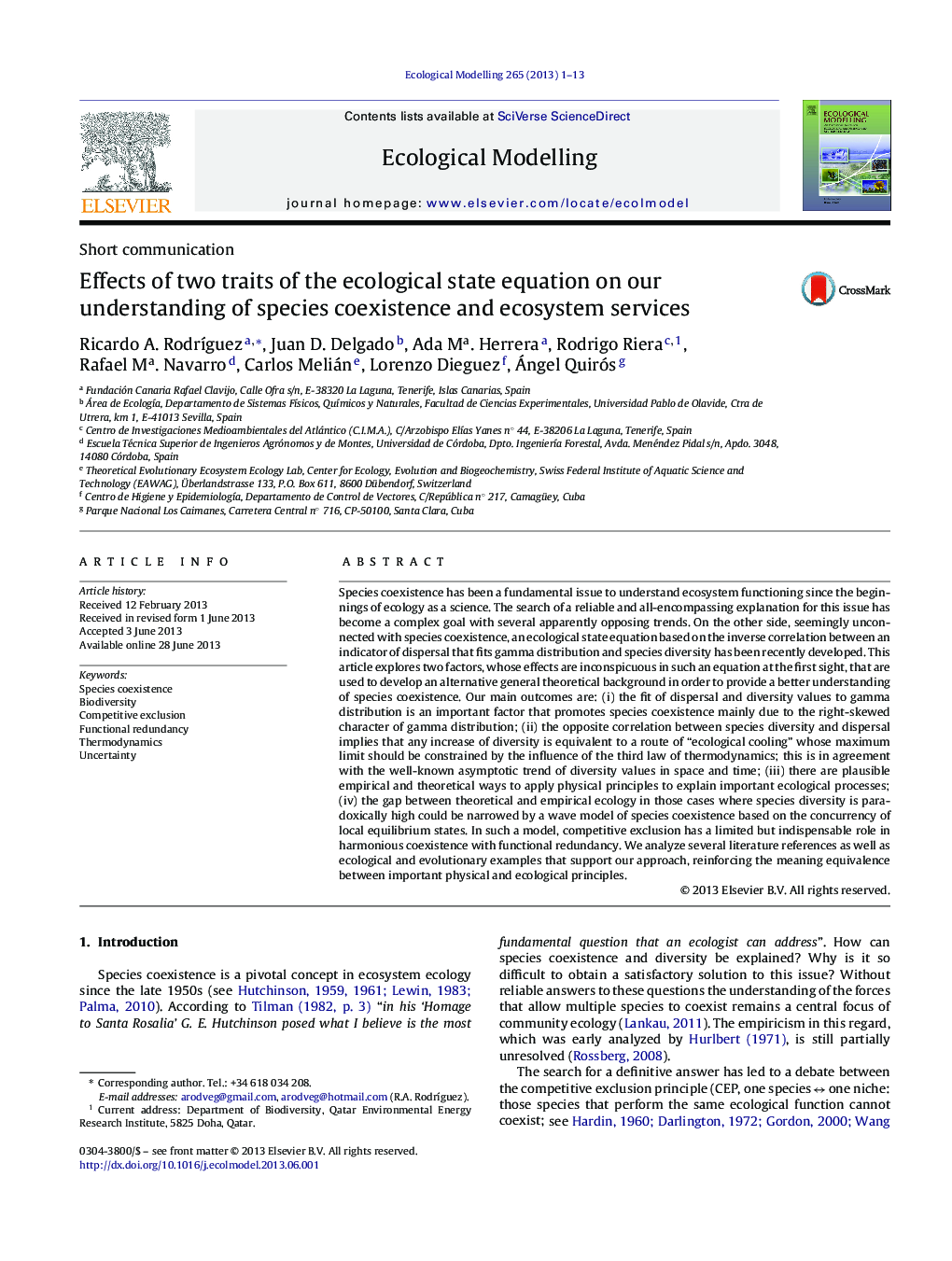| Article ID | Journal | Published Year | Pages | File Type |
|---|---|---|---|---|
| 6297063 | Ecological Modelling | 2013 | 13 Pages |
Abstract
Species coexistence has been a fundamental issue to understand ecosystem functioning since the beginnings of ecology as a science. The search of a reliable and all-encompassing explanation for this issue has become a complex goal with several apparently opposing trends. On the other side, seemingly unconnected with species coexistence, an ecological state equation based on the inverse correlation between an indicator of dispersal that fits gamma distribution and species diversity has been recently developed. This article explores two factors, whose effects are inconspicuous in such an equation at the first sight, that are used to develop an alternative general theoretical background in order to provide a better understanding of species coexistence. Our main outcomes are: (i) the fit of dispersal and diversity values to gamma distribution is an important factor that promotes species coexistence mainly due to the right-skewed character of gamma distribution; (ii) the opposite correlation between species diversity and dispersal implies that any increase of diversity is equivalent to a route of “ecological cooling” whose maximum limit should be constrained by the influence of the third law of thermodynamics; this is in agreement with the well-known asymptotic trend of diversity values in space and time; (iii) there are plausible empirical and theoretical ways to apply physical principles to explain important ecological processes; (iv) the gap between theoretical and empirical ecology in those cases where species diversity is paradoxically high could be narrowed by a wave model of species coexistence based on the concurrency of local equilibrium states. In such a model, competitive exclusion has a limited but indispensable role in harmonious coexistence with functional redundancy. We analyze several literature references as well as ecological and evolutionary examples that support our approach, reinforcing the meaning equivalence between important physical and ecological principles.
Keywords
Related Topics
Life Sciences
Agricultural and Biological Sciences
Ecology, Evolution, Behavior and Systematics
Authors
Ricardo A. RodrÃguez, Juan D. Delgado, Ada Ma. Herrera, Rodrigo Riera, Rafael Ma. Navarro, Carlos Melián, Lorenzo Dieguez, Ángel Quirós,
